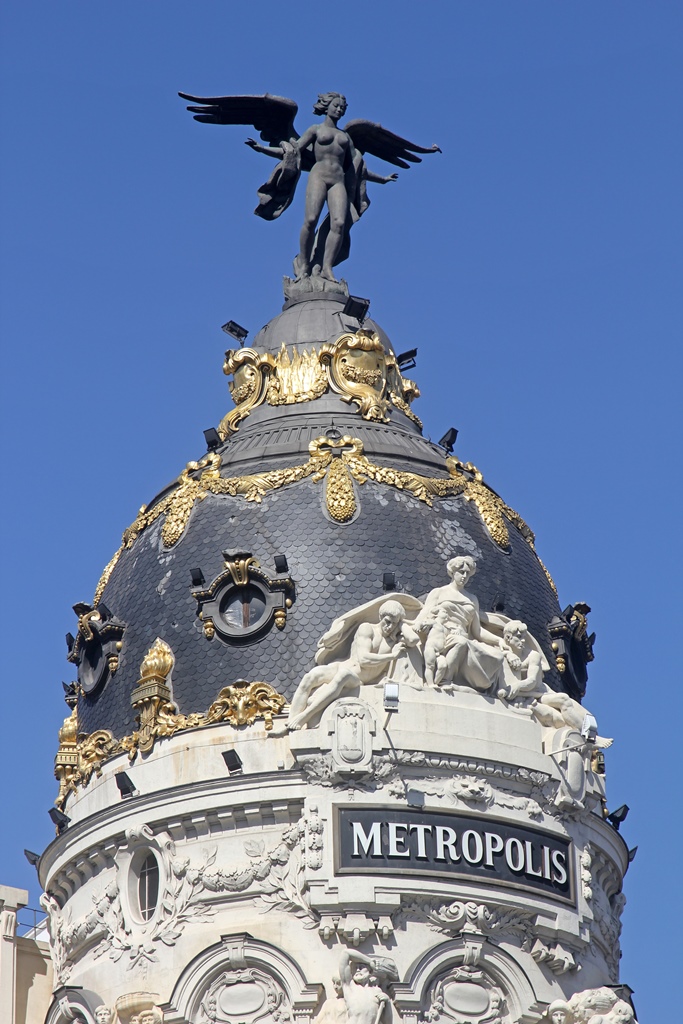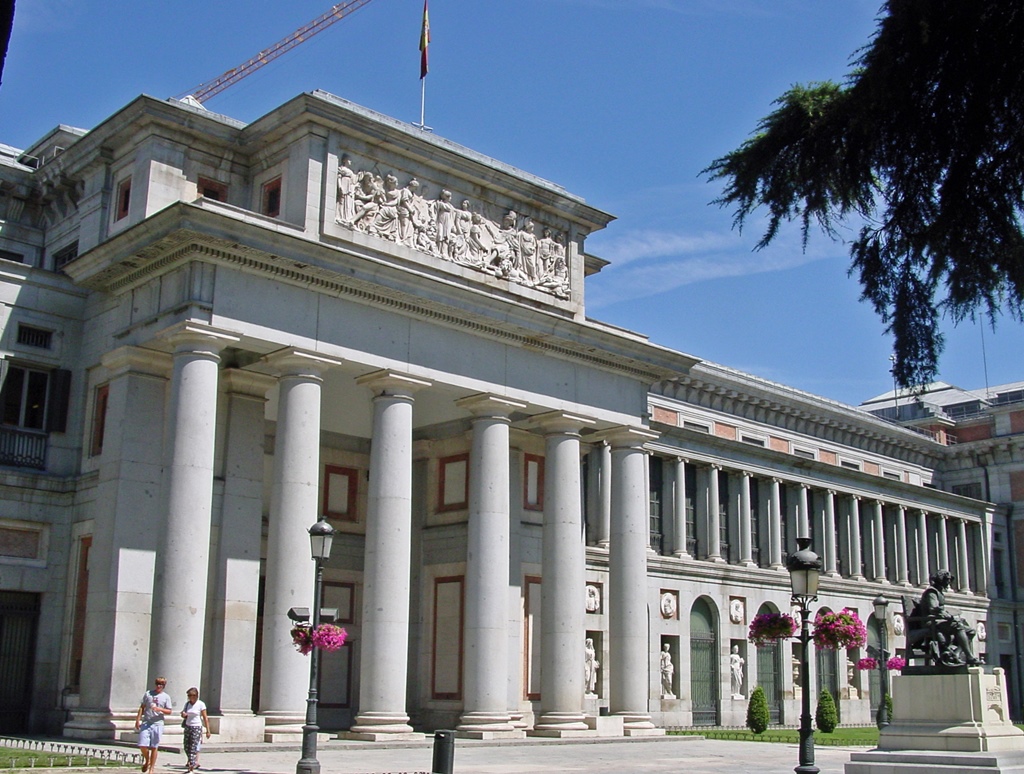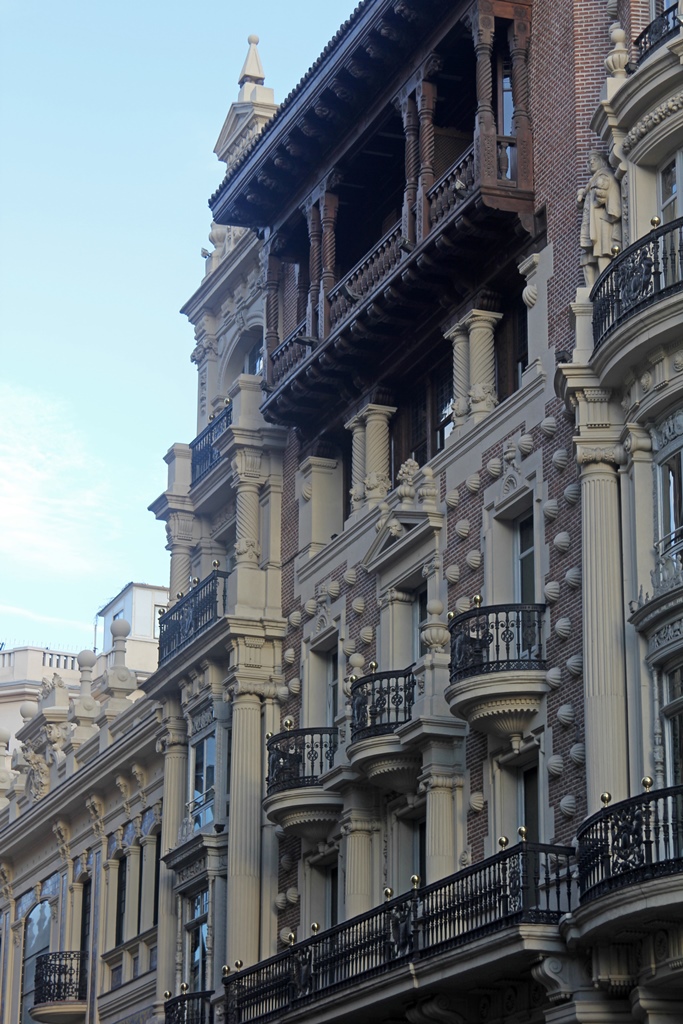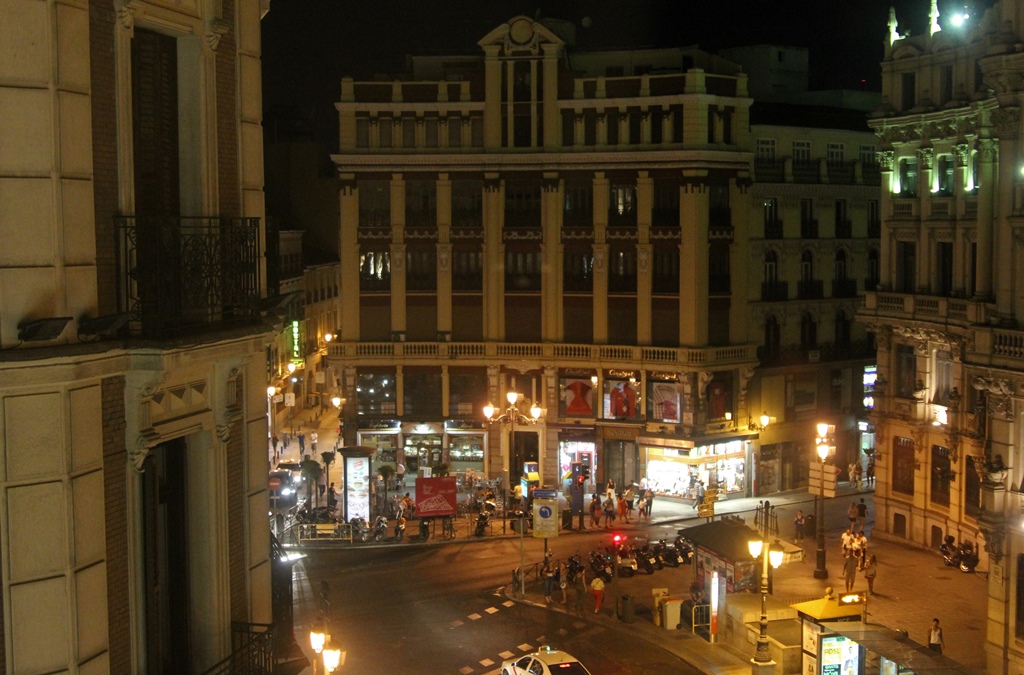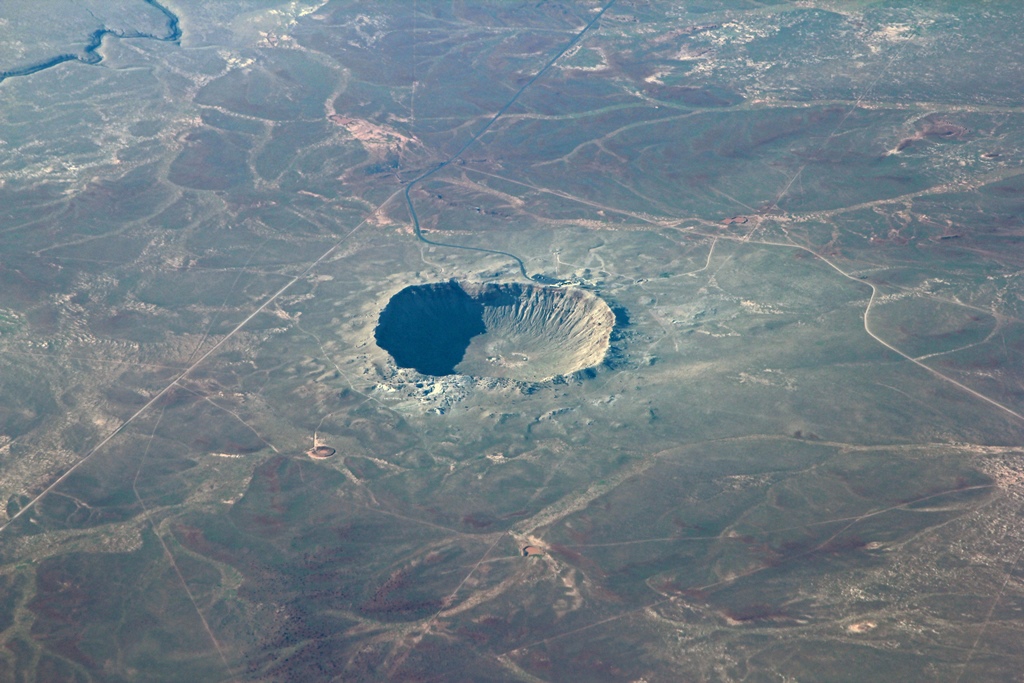Our last day in Madrid, and our last day to play tourist on this trip, dawned sunny
and hot as is the custom in August. But Nella still didn't feel up to playing tourist,
so Philip and I were on our own again. Our original plan had been to take another day
trip to some nearby destination (as we had done to
El Escorial
on our first pass through Madrid). Specifically, we had been considering going up to
Segovia, which has an impressive Roman aqueduct among other things. But we decided to
stay in Madrid instead – there were still some must-sees in town that we hadn't visited
this time around, and of course we wanted to stay local in case there was some service
we could perform for Nella.
We started by heading over to the Plaza de Cibeles, named after the iconic Fountain of
Cibeles in its center. This fountain depicts the Roman goddess Cybele, abiding in her
lion-drawn chariot, and looked pretty much the same as it had two years earlier. The
same went for the Metropolis Building, located a short distance to the west, at the
junction of Gran Vía and Calle de Alcalá. But the Palacio de Cibeles, a large building
on the southeast side of the plaza, looked much nicer, as it had been undergoing a
restoration two years before, and had been covered in scaffolding.
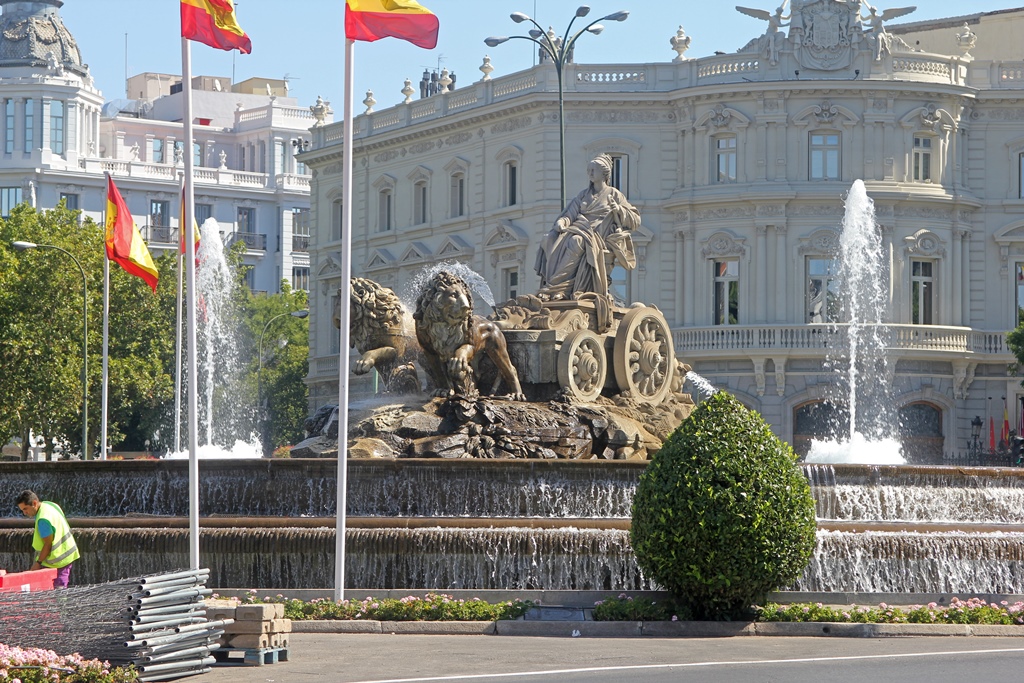
Cybele Fountain
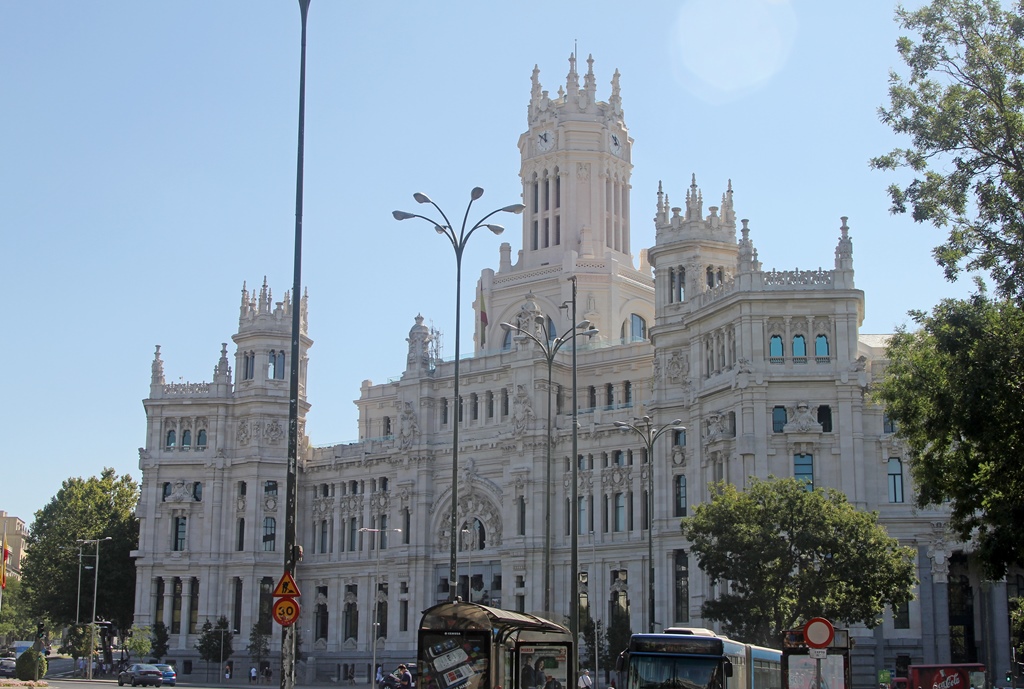
Palacio de Cibeles
Metropolis Building, detail
A short distance to the south, along Paseo del Prado, we found the Prado Museum, the
main reason we'd come this way. Philip had never visited the Prado, and I was happy
to go revisit some favorite artworks, and possibly discover some I'd overlooked before.
The Prado
Before going into the entrance at the north end of the building, we noticed the
statue of the artist Francisco de Goya which is situated outside the building at
this spot. The bronze statue was sculpted in 1902 by Mariano Benlliure, and stands
atop a pedestal featuring sculpted renderings of some of Goya's works. Possibly
Goya's most popular painting among the unwashed masses is his 1797 painting of the
Nude Maja, and she has the most prominent position on the pedestal. Goya also
painted a companion piece, called the Clothed Maja. The nude one is more popular.
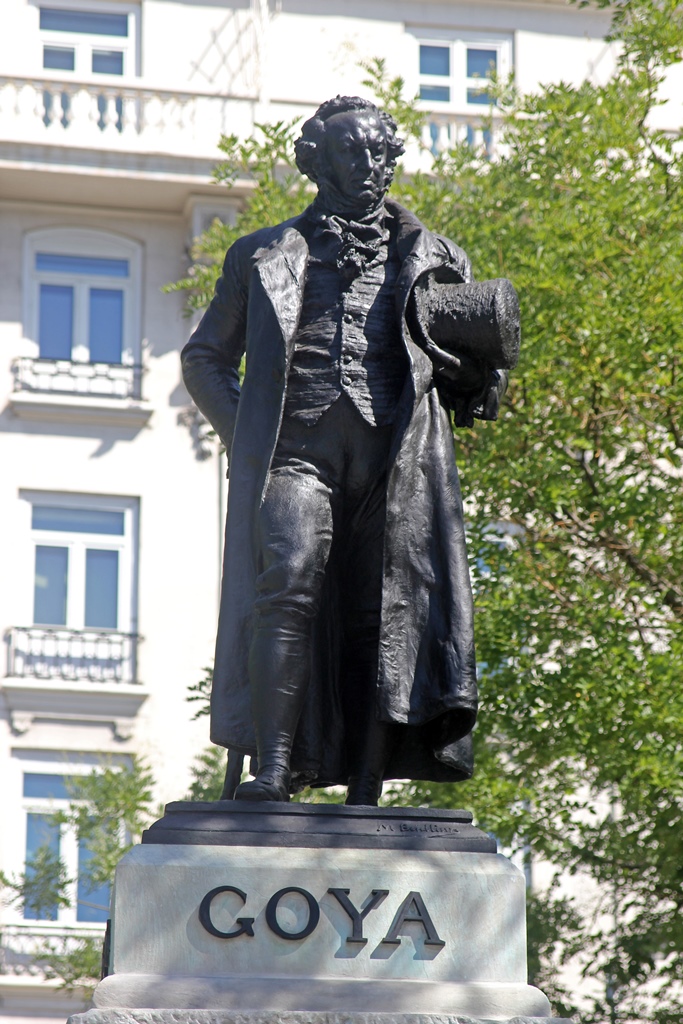
Goya Statue
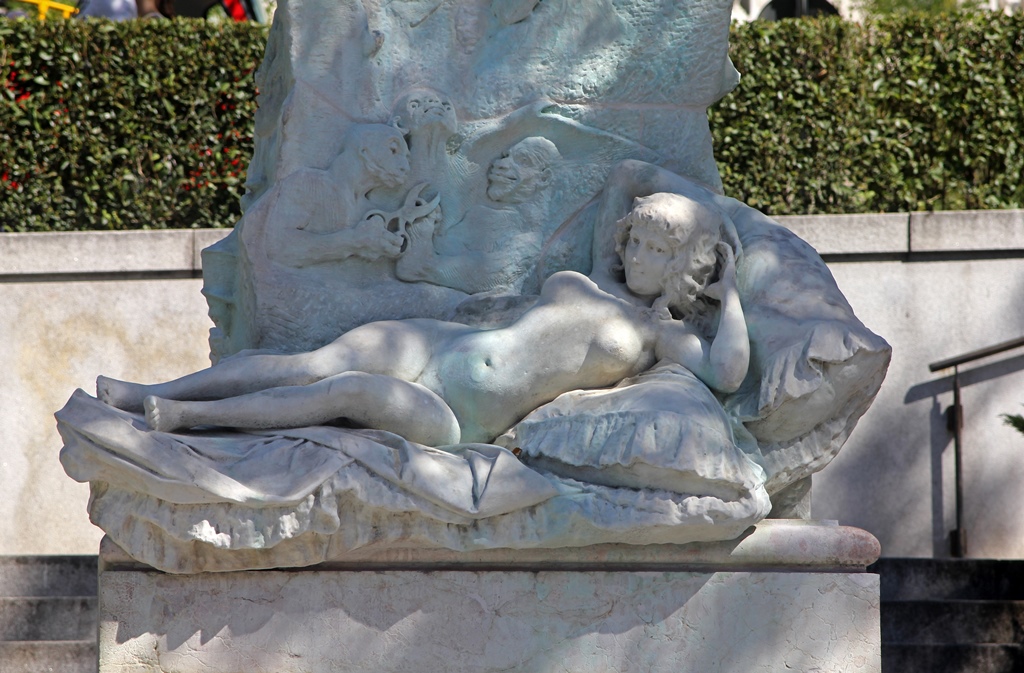
Goya Statue, "Nude Maja"
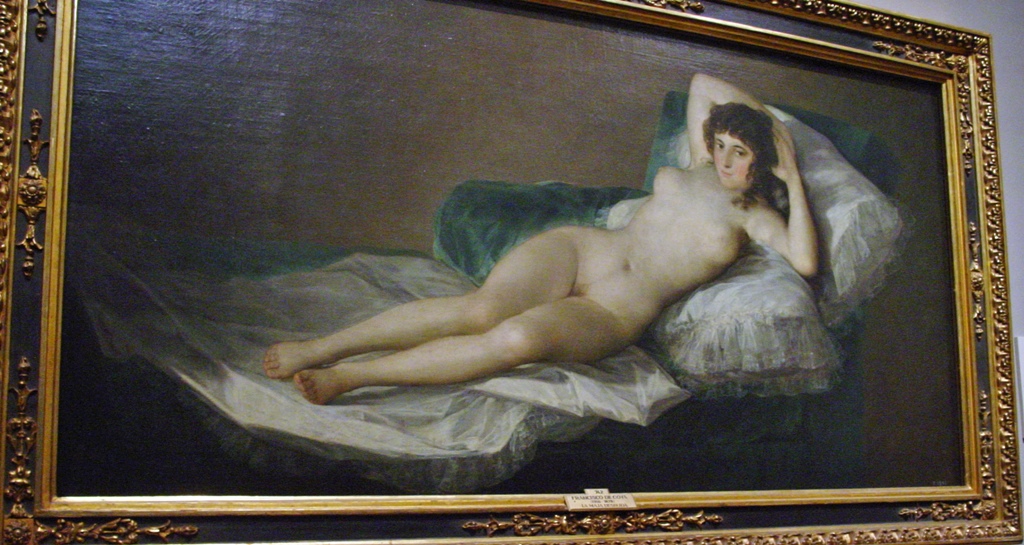
The Nude Maja, Francisco de Goya (ca. 1797)
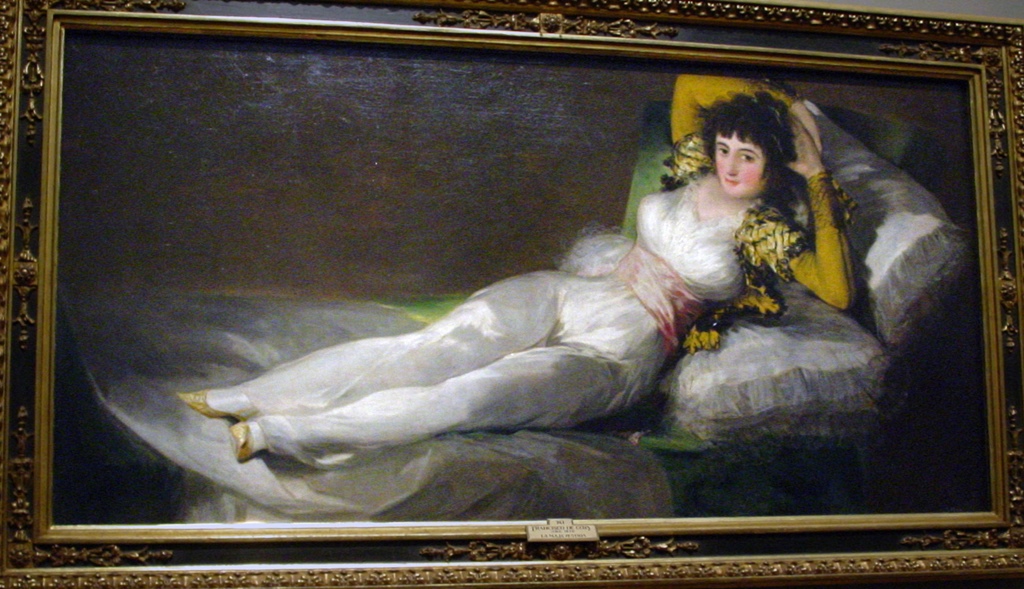
The Clothed Maja, Francisco de Goya (ca. 1797)
Both Maja paintings are found within the Prado, and we went in to look at them and at
the hundreds of other masterpieces hanging on the walls. The museum had the same
rule regarding photography that they'd had two years earlier (i.e. don't), so if
you'd like to see some of the paintings and additional Prado info, you might want
to check out
the Prado's website (or
our previous Prado page,
which is somewhat less comprehensive, but at least easier to navigate).
After getting worn out by the Prado, we headed back toward the hotel, passing by a
couple of other Madrid landmarks on the way.
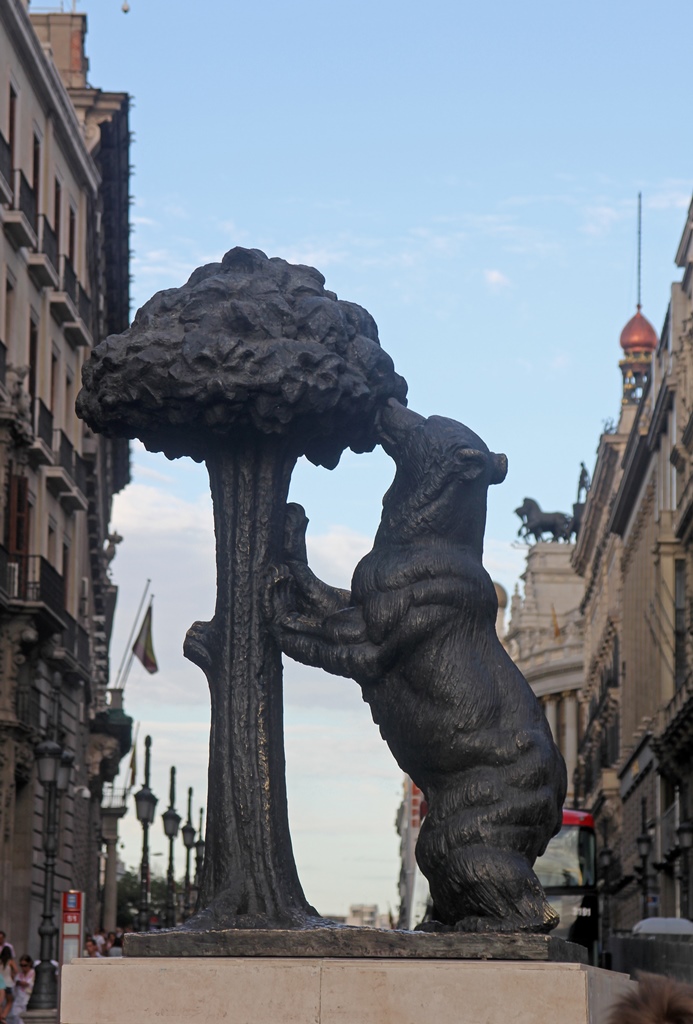
Bear with Madroño Tree, Puerta del Sol
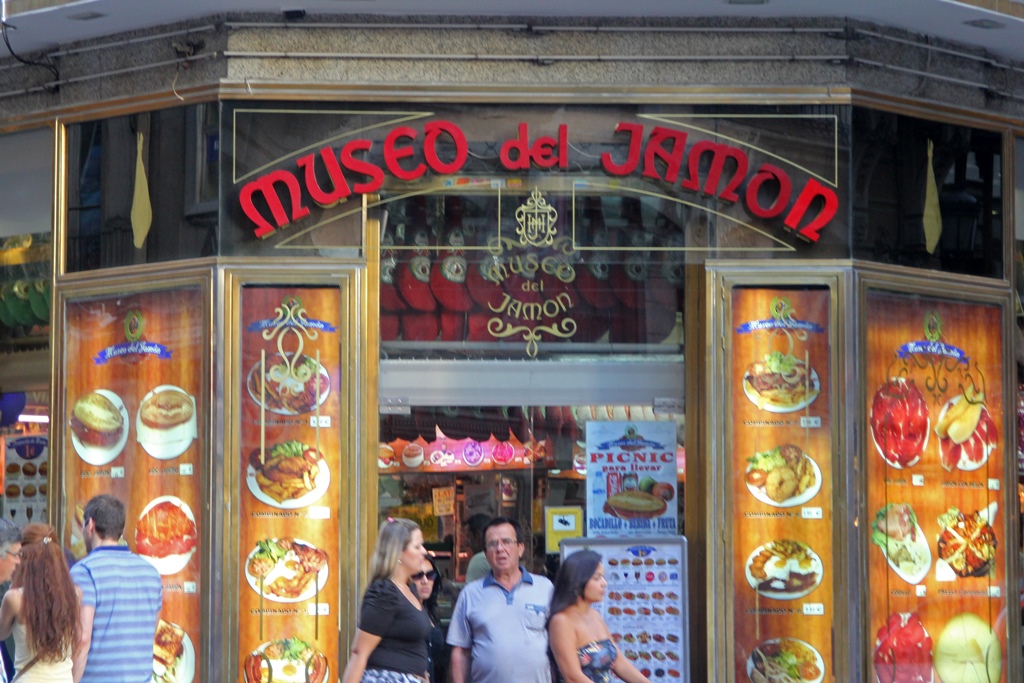
Museo del Jamón
The Hotel Quatro is a short block away from the Plaza de Canalejas, which has
five streets radiating from it. We couldn't help but notice some interesting
architecture clustered around this plaza.
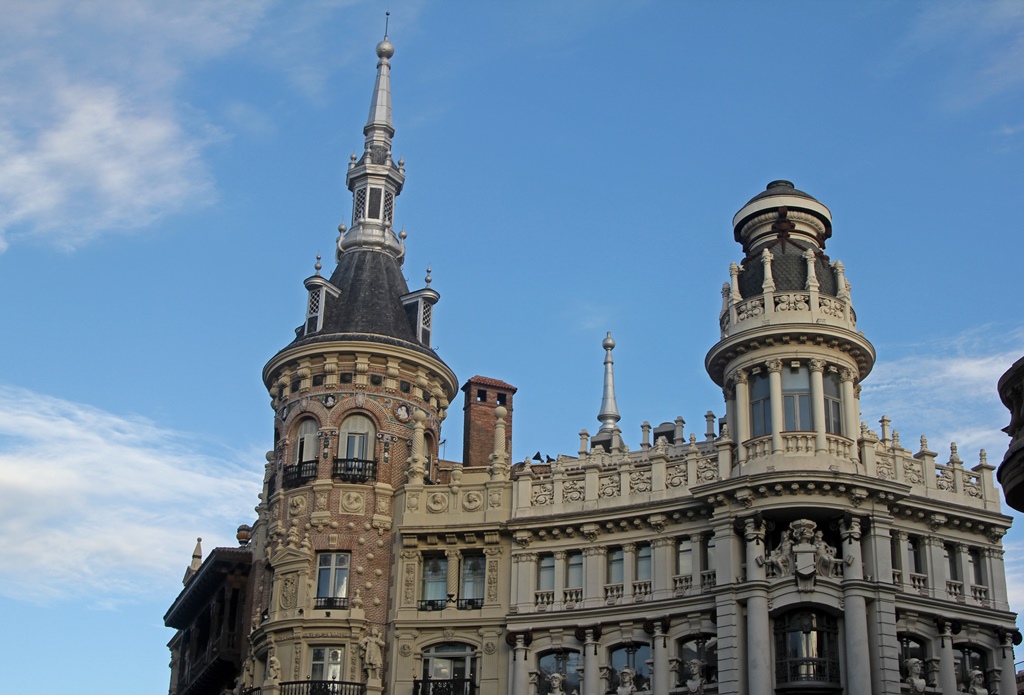
Edificio Meneses, Plaza de Canalejas
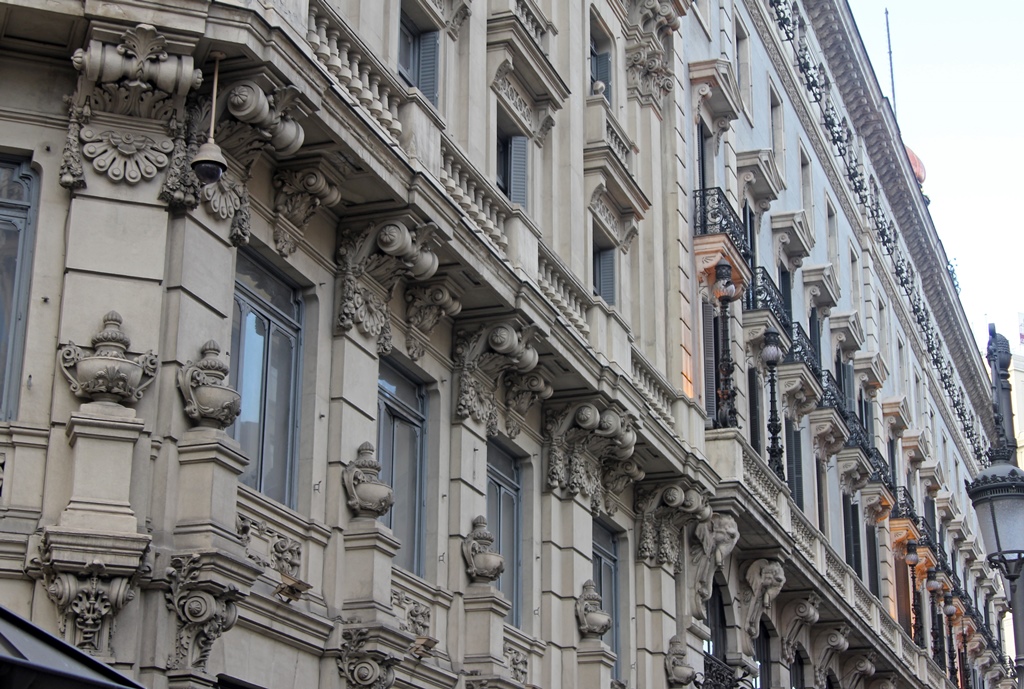
Across Calle de Sevilla from Hotel
Building on Carrera de San Jerónimo
On Google Maps, it appears that much of the block across Calle de Sevilla from our
hotel has been gutted and is undergoing some major construction. The façades along
this block are interesting, and hopefully at least some of them are being preserved.
We had an early flight to catch the following morning, so we began packing things so
we would have less to do in the morning. Nella was feeling well enough to help, which
was an encouraging sign. Philip and I eventually found dinner and brought back
some undemanding food for Nella. Then we spent our last night in Europe for another
year (or two, as it turned out).
Plaza de Canalejas After Dark
In the morning, Nella wasn't exactly energetic but was able to drag some light
luggage onto the Metro train for the ride to the airport. We found some breakfast
at the airport and boarded our plane back to the U.S. Our first flight stopped in
Charlotte, North Carolina, where Philip took the opportunity to find him some
Bojangles.
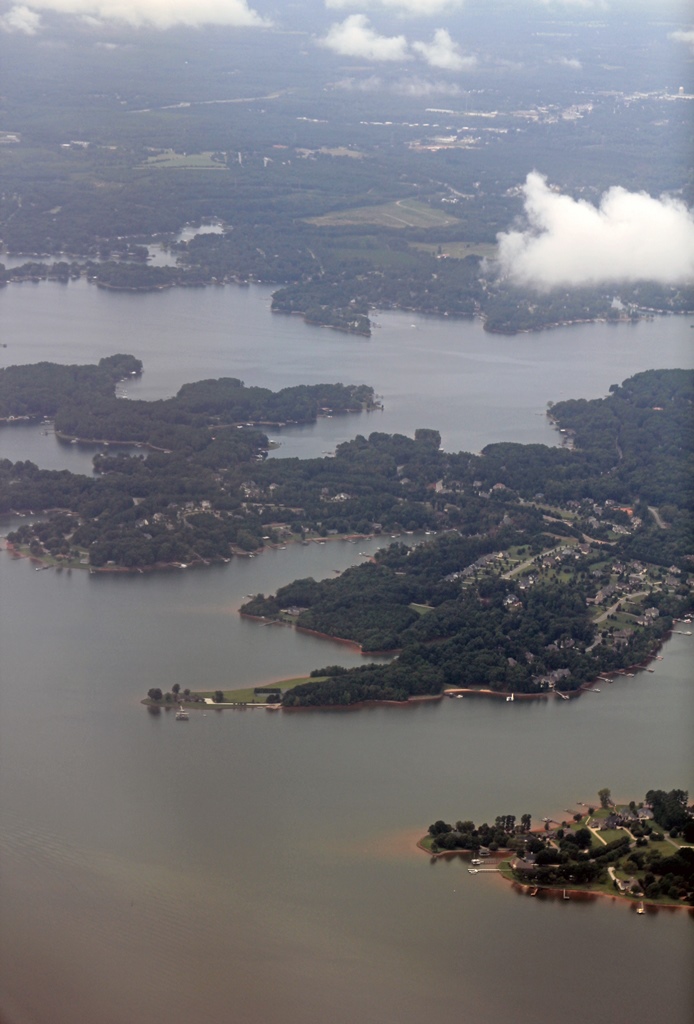
Lake near Charlotte
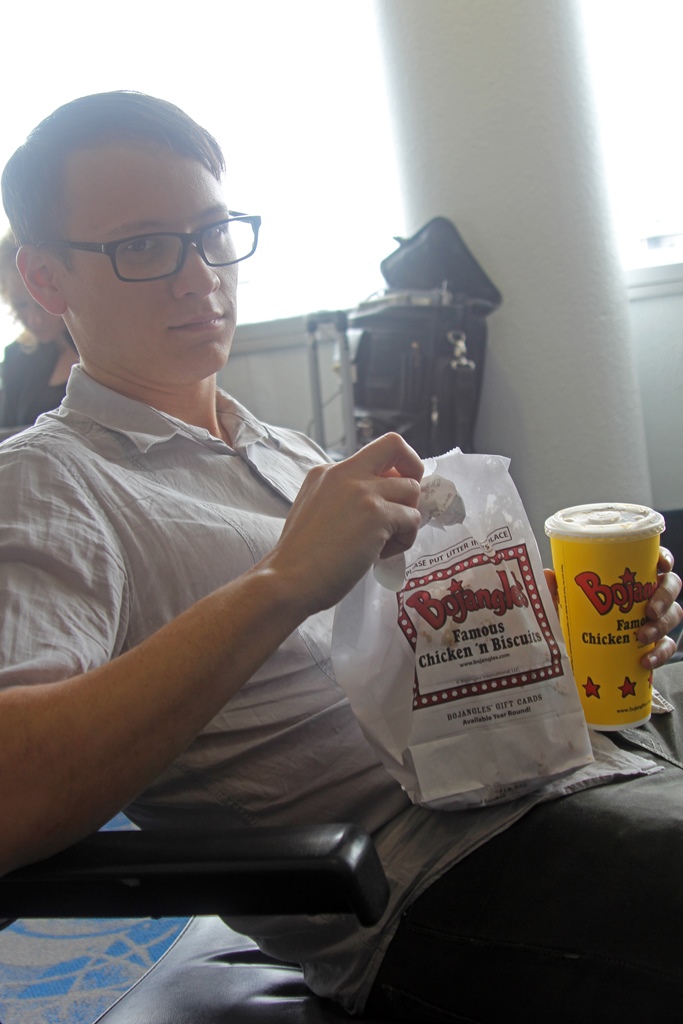
Philip with Bojangles Food
The flight that took us the rest of the way to Southern California passed over Arizona,
where we noticed a couple of interesting things from the plane. The first one was
Arizona's Meteor Crater (also known as Barringer Crater), which is thought to have
been created 50,000 years ago by a 160-foot meteorite that hit the ground at
about 8 miles per second.
Meteor Crater, Arizona
The crater is about 4,000 feet across and 560 feet deep. If you find yourself in
Middle of Nowhere, east-central Arizona, you might check it out. It's something you
probably don't see every day.
We also noticed a pretty large area which seemed to be made of eroded red rock. It looked
like a place someone should turn into a tourist attraction. It turns out someone thought
of this before we did, and called it Sedona.
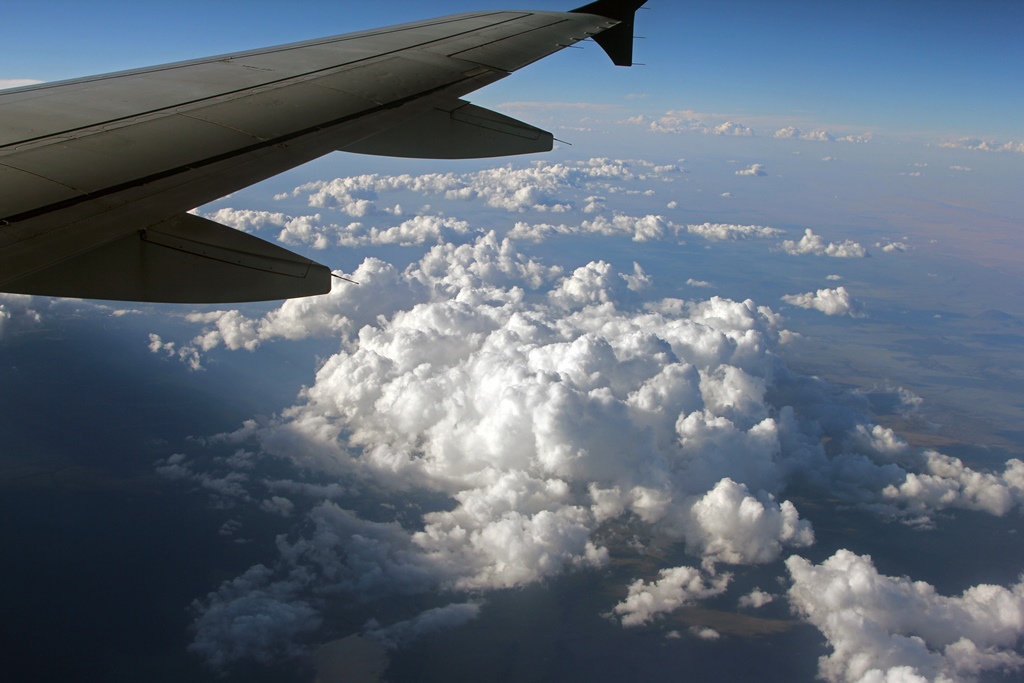
Clouds Over Arizona
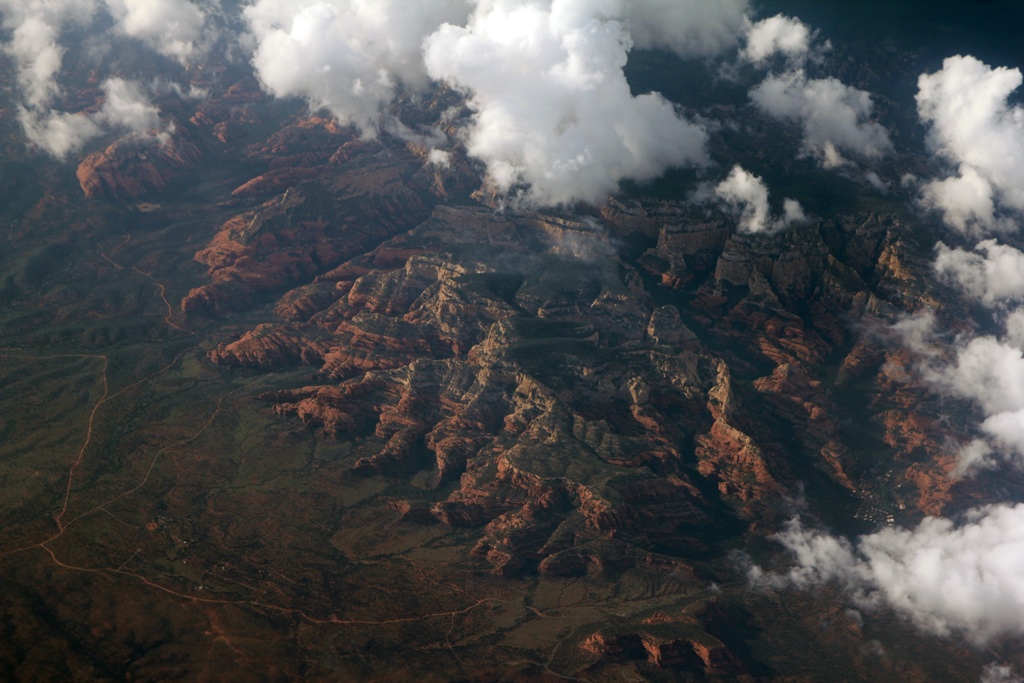
Sedona Area
Eventually we managed to land at LAX without making a crater, and we returned home
to resume our mundane lives. Until the next trip.



